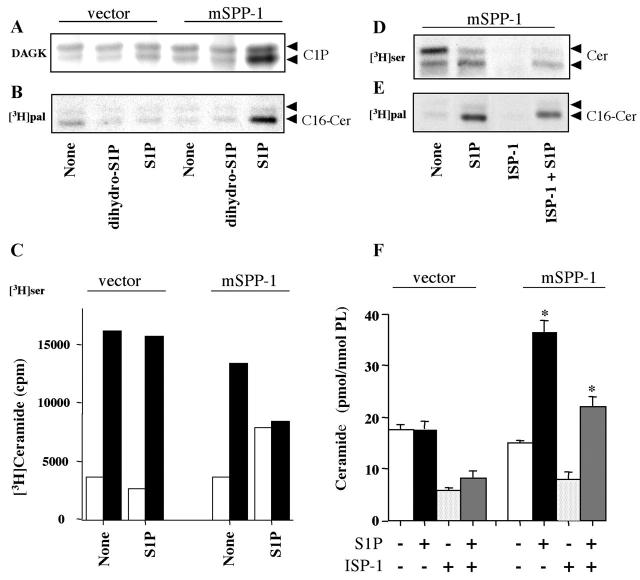Figure 8.
S1P, but not dihydro-S1P, induces biosynthesis of ceramide in mSPP-1–transfected cells. (A) Vector- and mSPP-1–transfected HEK 293 cells were incubated for 24 h without or with 5 μM S1P or 5 μM dihydro-S1P and ceramide determined after phosphorylation to ceramide-1-phosphate (C1P) in the DAG kinase assay. The upper and lower C1P bands are derived from very long and long chain ceramides, respectively. (B) Duplicate cultures were incubated with [3H]palmitic acid (10 μCi/ml), ceramide isolated, separated by TLC, and then visualized by autoradiography. (C) Similarly, labeled ceramide from cells incubated with l-3-[3H]serine (30 μCi/ml) was isolated, separated by TLC, and two ceramide bands were radioactivity quantitated with a radiochromatogram scanner (open bars, long chain ceramide; filled bars, very long chain ceramide). (D–F) Effect of ISP-1. Cells were incubated without or with 5 μM S1P in the absence or presence of 10 μM ISP-1 and labeled with l-[3H]serine (D) or [3H]palmitic acid (E). 24 h later, lipids were separated by TLC. Ceramide mass was measured in unlabeled duplicate cultures (F). Data are means ± SEM of three experiments, each performed in duplicate. For all panels, a representative result from three independent experiments is shown.

